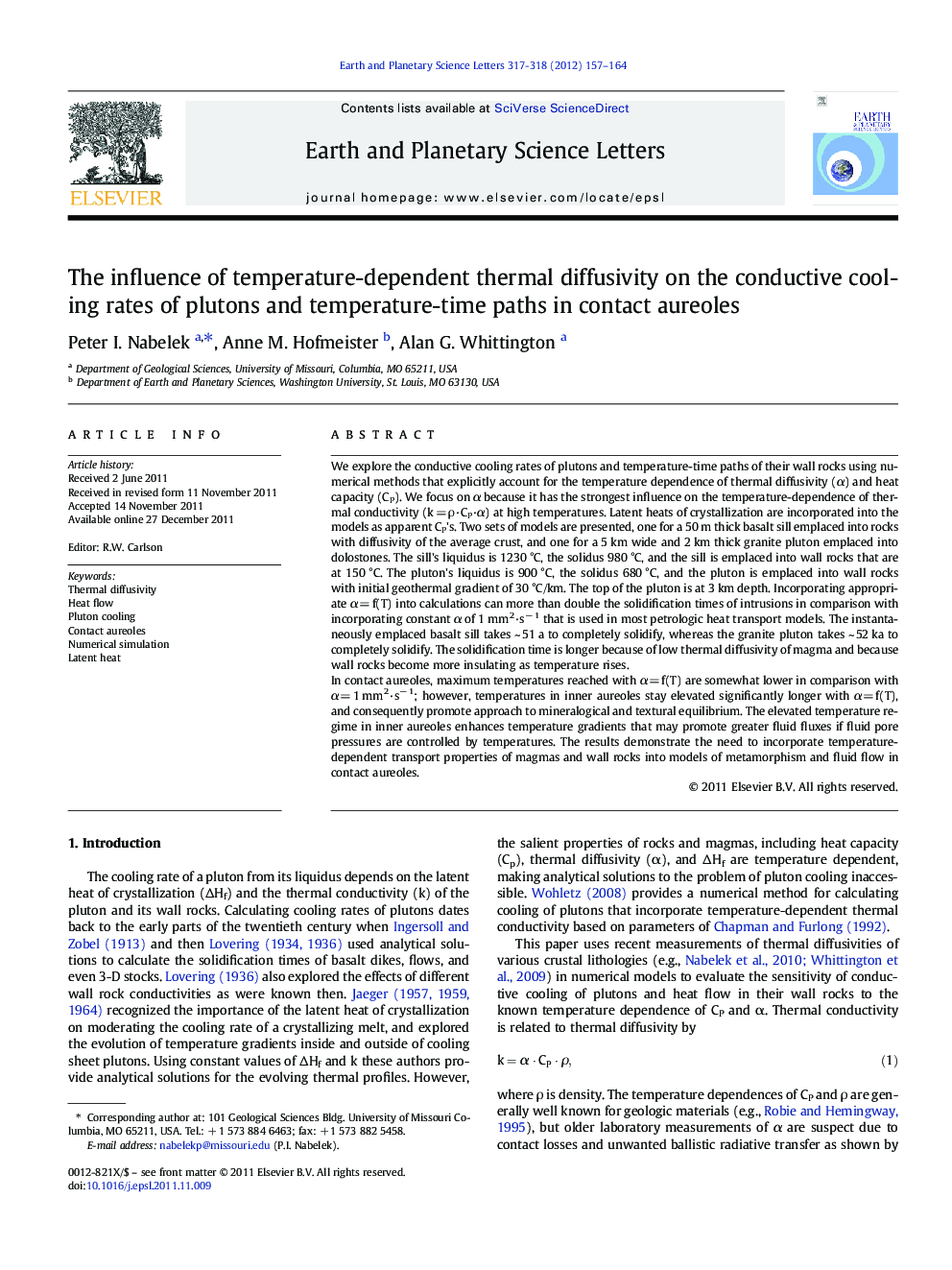| کد مقاله | کد نشریه | سال انتشار | مقاله انگلیسی | نسخه تمام متن |
|---|---|---|---|---|
| 4677633 | 1634812 | 2012 | 8 صفحه PDF | دانلود رایگان |

We explore the conductive cooling rates of plutons and temperature-time paths of their wall rocks using numerical methods that explicitly account for the temperature dependence of thermal diffusivity (α) and heat capacity (CP). We focus on α because it has the strongest influence on the temperature-dependence of thermal conductivity (k = ρ·CP·α) at high temperatures. Latent heats of crystallization are incorporated into the models as apparent CP's. Two sets of models are presented, one for a 50 m thick basalt sill emplaced into rocks with diffusivity of the average crust, and one for a 5 km wide and 2 km thick granite pluton emplaced into dolostones. The sill's liquidus is 1230 °C, the solidus 980 °C, and the sill is emplaced into wall rocks that are at 150 °C. The pluton's liquidus is 900 °C, the solidus 680 °C, and the pluton is emplaced into wall rocks with initial geothermal gradient of 30 °C/km. The top of the pluton is at 3 km depth. Incorporating appropriate α = f(T) into calculations can more than double the solidification times of intrusions in comparison with incorporating constant α of 1 mm2·s− 1 that is used in most petrologic heat transport models. The instantaneously emplaced basalt sill takes ~ 51 a to completely solidify, whereas the granite pluton takes ~ 52 ka to completely solidify. The solidification time is longer because of low thermal diffusivity of magma and because wall rocks become more insulating as temperature rises.In contact aureoles, maximum temperatures reached with α = f(T) are somewhat lower in comparison with α = 1 mm2·s− 1; however, temperatures in inner aureoles stay elevated significantly longer with α = f(T), and consequently promote approach to mineralogical and textural equilibrium. The elevated temperature regime in inner aureoles enhances temperature gradients that may promote greater fluid fluxes if fluid pore pressures are controlled by temperatures. The results demonstrate the need to incorporate temperature-dependent transport properties of magmas and wall rocks into models of metamorphism and fluid flow in contact aureoles.
► Temperature-dependence of thermal diffusivity influences heat flow in magmatic systems.
► Duration of model magmatic regimes of plutons can double compared to previous models.
► Elevated temperatures in contact aureoles remain longer than in previous models.
Journal: Earth and Planetary Science Letters - Volumes 317–318, 1 February 2012, Pages 157–164